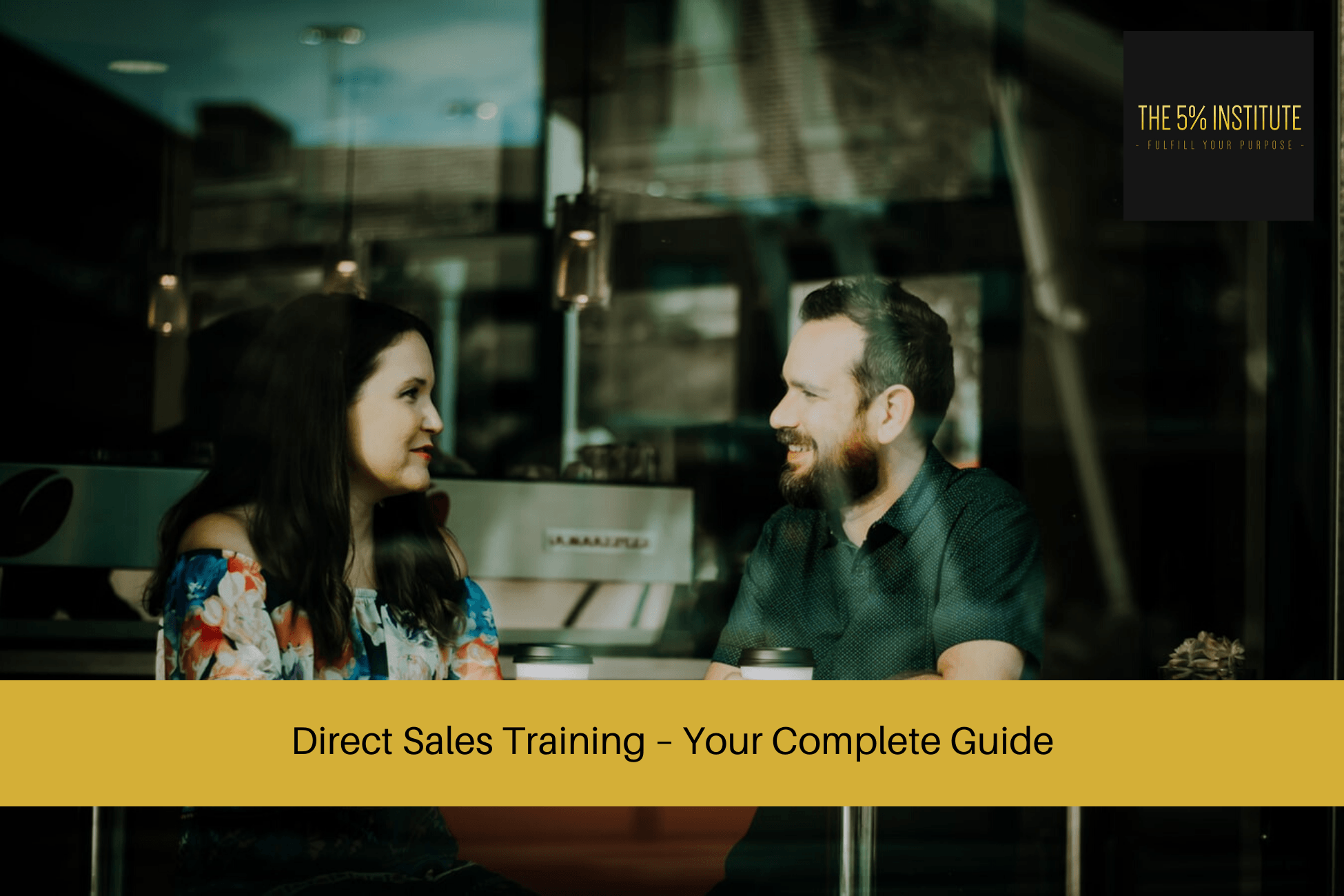
Direct Sales Training – Your Complete Guide
If you’re selling a product or service face to face; be it with in person consultations, MLM or in a group environment – then direct sales training may be perfect for you.
In this article, you’ll learn:
- What direct sales training is
- Why the old sales methods no longer work?
- What topics your direct sales training should cover
- How to invest in direct sales training
Direct Sales Training – Your Complete Guide
What Is Direct Sales?
Prior to diving into your direct sales training; let’s first look at the overview of where direct sales falls into.
Direct selling refers to selling products or services directly to the consumer. It means it isn’t business to business, but rather you sell directly to the end user who’ll benefit from your product or service.
There are various types of direct sales roles. These include:
- One to one: Examples include door to door sales, or using a booth of some kind to sell directly to consumers
- Group environment: Examples include a Tupperware party, or a Realtor presenting to a group of potential clients
- MLM: MLM; or multi-level marketing also falls into the direct selling category, as it’s your responsibility to make sales and build your down line
Generally – people who are involved in direct sales are selling products and services that wouldn’t be typically found in a retail environment.
Direct Sales Training – The Old Way
Direct sales training has evolved over the years; and many of the old techniques that worked many years ago, no longer work in direct sales today.
The reason being, is the availability and quick access to the internet.
Many years ago – it was taught in old school direct sales training programs, that your potential client relied on their information from the sales person.
Although this may have worked before, everyone now has a smart phone – which means your potential clients can do their research up front without talking to a sales person.
This means our potential clients are smarter than ever, and that the old way of direct sales training no longer works.
The old direct sales training method included:
- Building some rapport
- Presenting your offer
- Asking questions and handling objections
- Asking for the sale
The old school direct sales training program would then teach you to rinse and repeat this methodology.
You were taught to find as many people as you can talk to, and then pitch your offer as outlined above.
There are two big flaws with the old direct sales training methodology.
Firstly – by pitching prior to learning about their pain points, desires, and ideal outcomes – we’re doing something called premature presentation.
Premature presentation is when we present with the hope of landing something that may interest our potential clients; however, it’s very much a spray and pray approach.
This means you’re using hope as a sales strategy – which isn’t reliable.
The second issue with the old direct sales training method, is that it is based on assumptions.
How many people have you spoken with about your product or service – only to realise they’re not qualified for your offer?
Either they don’t have the money for it, aren’t a decision maker, or perhaps how no desire what the solution your offer solves.
That’s why it is crucial to qualify early on; this allows you to become targeted with your approach, so you only speak with potential clients that would be interested in buying what you sell.
Direct Sales Training – The New Method
Fortunately, there is a new direct sales training method which we will cover in more detail.
No matter what you sell – we recommend using a consultative approach when speaking with your potential clients.
The reason being, is it allows you prescribe a solution to a person’s pain points, rather than tell them about your product and service and hope something sticks.
This positions you as a trusted adviser, rather than just another sales person.
For example, when you visit a medical specialist; they don’t tell you about their products and services and hope that you’ll buy something.
Instead – they find out about your situation, your pain points and issues, and then prescribe what you need to get to where you want to be.
The same is true for modern direct sales training.
Below is a framework we at The 5% Institute prescribe.
Qualifying
The first step to learn in direct sales training, is to qualify your potential clients.
There is a famous acronym called BANT; which is widely used to quality prospects. BANT stands for:
- Budget
- Authority
- Need
- Time frame
By using the BANT acronym, you’ll have a simple framework to use to ensure you’re speaking with people who would qualify for your offer.
Rapport
The next step we teach in our direct sales training program, is building rapport.
When we teach building rapport – we teach it on two levels. We need to build rapport with people consciously, as well as subconsciously.
The way we can do this, is by communicating with people using our whole communication ratio. This means using our body language, tonality and of course our words to effectively persuade people without being pushy.
Finding Pain
People buy, because they generally want to get to a better situation in comparison to where they’re current at.
This means people buy to escape pain – which is why we cover this in our direct sales training program.
By learning how to ask deep diving questions, you’ll be able to get to the truth of why a potential client wants to buy; which’ll give you the opportunity to serve them at a deeper level.
Once you start having sales conversations that focus on pain points, you’ll have the opportunity to have truthful dialogue about how you can help them get to where they need to be.
Understanding Their Desires
Similar to finding pain; the next module covered in our direct sales training program is learning about their desired outcomes.
By learning about their outcomes and desired results – you’ll learn how to bridge the gap of where they are, to where they want to be by using your product or service.
Talking About Money
Many direct sales training programs have you leave money until the very end of the conversation.
The problem with this approach, is that you may be wasting an hour or longer speaking with someone who can’t physically afford your product or service.
By bringing up money – we generally want to learn two things.
- What is it costing them by not fixing their pain points?
- How much will they invest to potentially solve it?
Presenting
As mentioned earlier – when presenting your products or services, they should always be done in a way that bridges the gap from where they are, to where they want to be – by using your product or service.
During your sales conversation, you may learn that they won’t in fact benefit from your product or service. If that’s the case – that is completely fine.
Sales isn’t a ‘sell to everybody’ game. Successful selling is by finding people who would benefit from your product or service, and then serving them with what you sell.
Handling Objections
Traditional direct sales training programs teach using scripts to handle objections.
As per our article in Entrepreneur; we outline why this is a mistake, and what you should do instead.
Instead – use a step by step framework, which we outline in our article here.
Final Thoughts On Direct Sales Training
If you’re selling a product or service directly to your potential clients, then we recommend using a framework and sales process – this way, you’ll have a higher chance of consistently closing sales.
If you’re interested in enhancing your sales, then The 5% Sales Blueprint may be right for you.
To learn more about our direct sales training program, click the link here to learn more.



